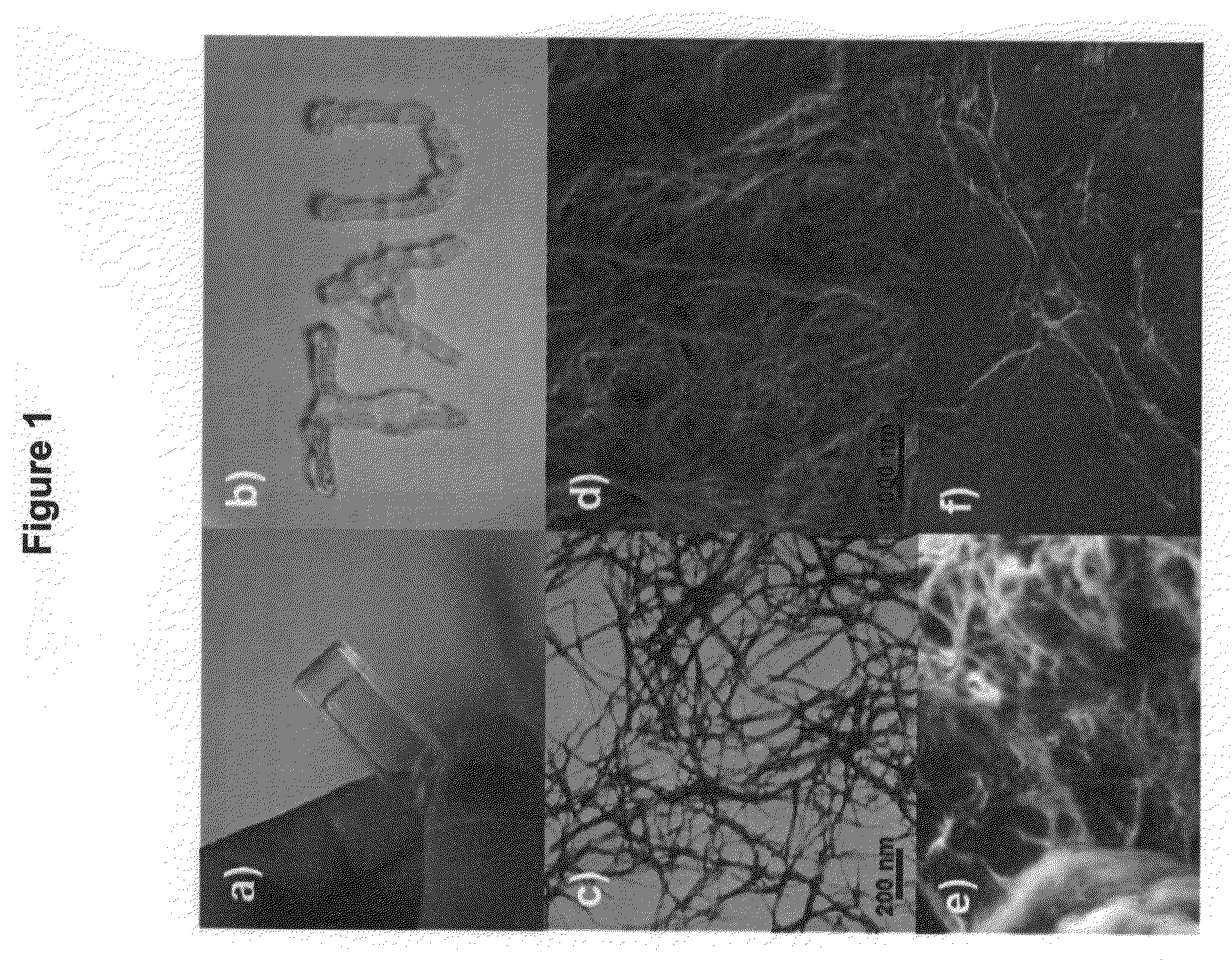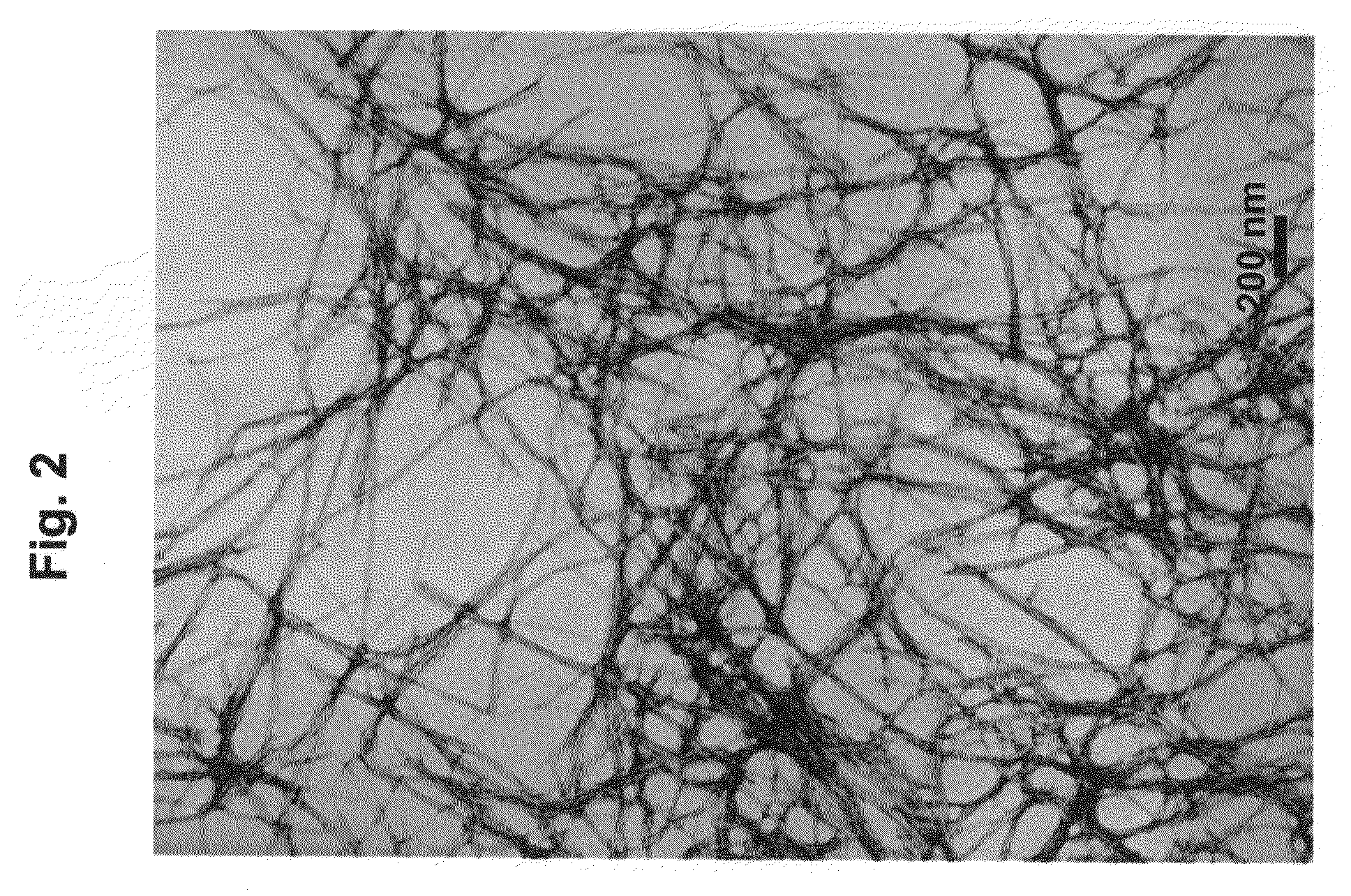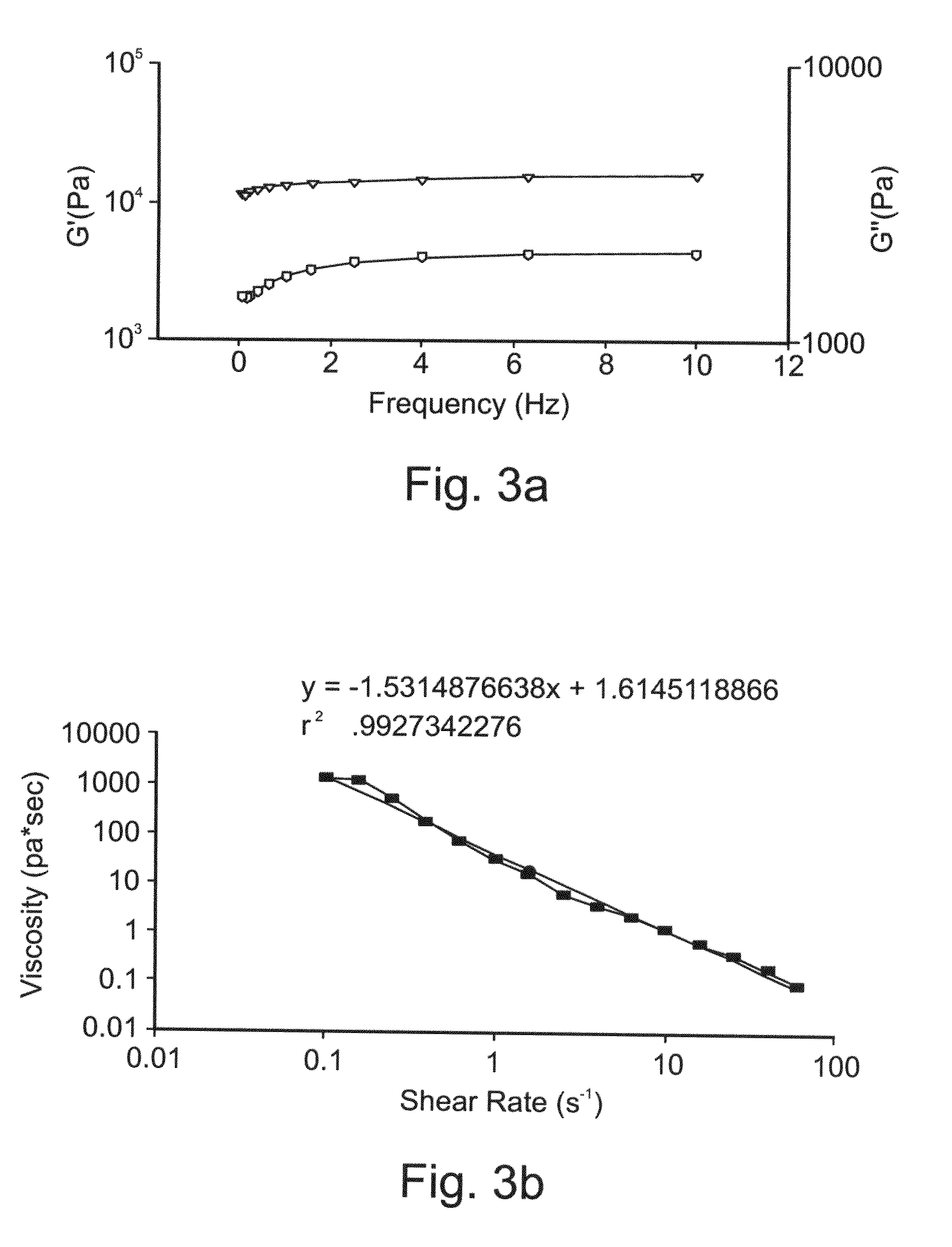Self-Assembled Fmoc-Ff Hydrogels
a self-assembling, hydrogel technology, applied in the direction of dipeptide ingredients, radiation therapy, biocide, etc., can solve the problems of low rigidity, instability under certain conditions, and/or the complexity of the preparation, and achieve the effect of exceptional chemical, physical and mechanical properties
- Summary
- Abstract
- Description
- Claims
- Application Information
AI Technical Summary
Benefits of technology
Problems solved by technology
Method used
Image
Examples
examples
[0246]Reference is now made to the following examples, which together with the above descriptions, illustrate the invention in a non limiting fashion. The procedures therein are believed to be well known in the art and are provided for the convenience of the reader. All the information contained therein is incorporated herein by reference.
[0247]Hydrogel formation: Lyophilized Fmoc-diphenylalanine peptide (Bachem, Budendorf, Switzerland) was dissolved in 1,1,1,3,3,3-hexafluoro-2-propanol (HFIP), acetone or dimethylsulfoxide (DMSO) at concentrations of 100 and 25 mg / ml. The hydrogel was prepared by diluting the stock solution in ultra-pure water. Dilution was performed so as to obtain a final peptide concentration of 0.5 mg / ml, 1 mg / ml or 5 mg / ml, unless otherwise indicated. To avoid any pre-aggregation and assembly, fresh stock solutions were prepared for each experiment.
[0248]Determination of water percentage in the gel was done by washing a freshly formed hydrog...
PUM
| Property | Measurement | Unit |
|---|---|---|
| Temperature | aaaaa | aaaaa |
| Temperature | aaaaa | aaaaa |
| Time | aaaaa | aaaaa |
Abstract
Description
Claims
Application Information
 Login to View More
Login to View More - R&D
- Intellectual Property
- Life Sciences
- Materials
- Tech Scout
- Unparalleled Data Quality
- Higher Quality Content
- 60% Fewer Hallucinations
Browse by: Latest US Patents, China's latest patents, Technical Efficacy Thesaurus, Application Domain, Technology Topic, Popular Technical Reports.
© 2025 PatSnap. All rights reserved.Legal|Privacy policy|Modern Slavery Act Transparency Statement|Sitemap|About US| Contact US: help@patsnap.com



